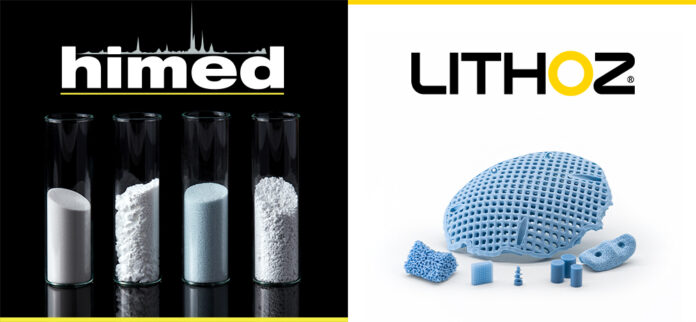For the next chapter on how to drive innovation and research into the 3D printing of medical-grade bioceramics, Lithoz is joining forces with New York-based biomaterials specialist Himed.
The developer of the LithaBone HA 480 material was searching for a strategic partner in the United States to better access the enormous potential of top-level surgery specialists. The partnership is therefore timely as it might lead to the large-scale commercialization of this highly specific 3D printing product, and on the other hand, a powerful intercontinental pool of top researchers driving 3D printable bioceramics to the next level.
Partnering with Himed allows Lithoz to explore the potentials of other CaP phases within the highly sophisticated biomimetic forms their printers can make, a press release says.
What’s that potential?
Due to their biocompatibility and osteoconductivity properties, the tricalcium phosphate or hydroxy apatite-based LithaBone medical ceramics can be a great alternative to metals used in human surgery.
Moreover, several research opportunities are currently in progress to explore the capabilities of this new material.
First-phase research will occur at Lithoz’s U.S. location in Troy, NY this summer by a joint team of materials scientists. Himed will install a new Lithoz CeraFab S65 printer at their 25,000 sq. ft. facility in Long Island early this fall, allowing the company to more rapidly experiment on site and run important analytical testing at its in-house laboratory. The addition of a CeraFab S65 at Himed also broadens their R&D service offerings, adding rapid prototyping of different forms for clients who contract with Himed to conduct unique biomaterials research, Lithoz explains.
“Himed understands CaP optimization and how to scale it for a growing market. We’ve refined many calcium phosphates to strengthen their healing potential, but most of these were targeted toward surface coatings on traditionally manufactured titanium implants. Lithoz’s remarkable 3D printing technology allows a whole new direction for our products, in which we can use CaP to its greatest advantage—as a biomimetic material within the implant structure itself that can be replaced by a person’s own natural bone over time,” Himed’s CEO, Dana Barnard, explains.
Ultimately, both companies believe there is still much to discover about developing CaP materials to augment the performance of 3D-printed implantable forms. This strategic partnership represents a first step in growing the range of biocompatible materials suitable for a future that includes highly customized, patient-specific medical solutions that can be printed on demand. Over the last thirty years, calcium phosphates such as hydroxy apatite have gained widespread use in implantable devices, bone putties, and grafting materials for their similarity to natural bone, and can aid the organic regrowth of hard tissue at the implantation site. Since 1991, Himed has collaborated with different medical implant manufacturers to develop and optimize various CaP powders and surface treatments for osseointegration. The partnership with Lithoz, however, allows new opportunities for Himed in the medical additive manufacturing market beyond bioactive surface treatments and post-processing of implants, Lithoz concludes in a press release.
Remember, you can post free of charge job opportunities in the AM Industry on 3D ADEPT Media or look for a job via our job board. Make sure to follow us on our social networks and subscribe to our weekly newsletter : Facebook, Twitter, LinkedIn & Instagram ! If you want to be featured in the next issue of our digital magazine or if you hear a story that needs to be heard, make sure to send it to contact@3dadept.com






